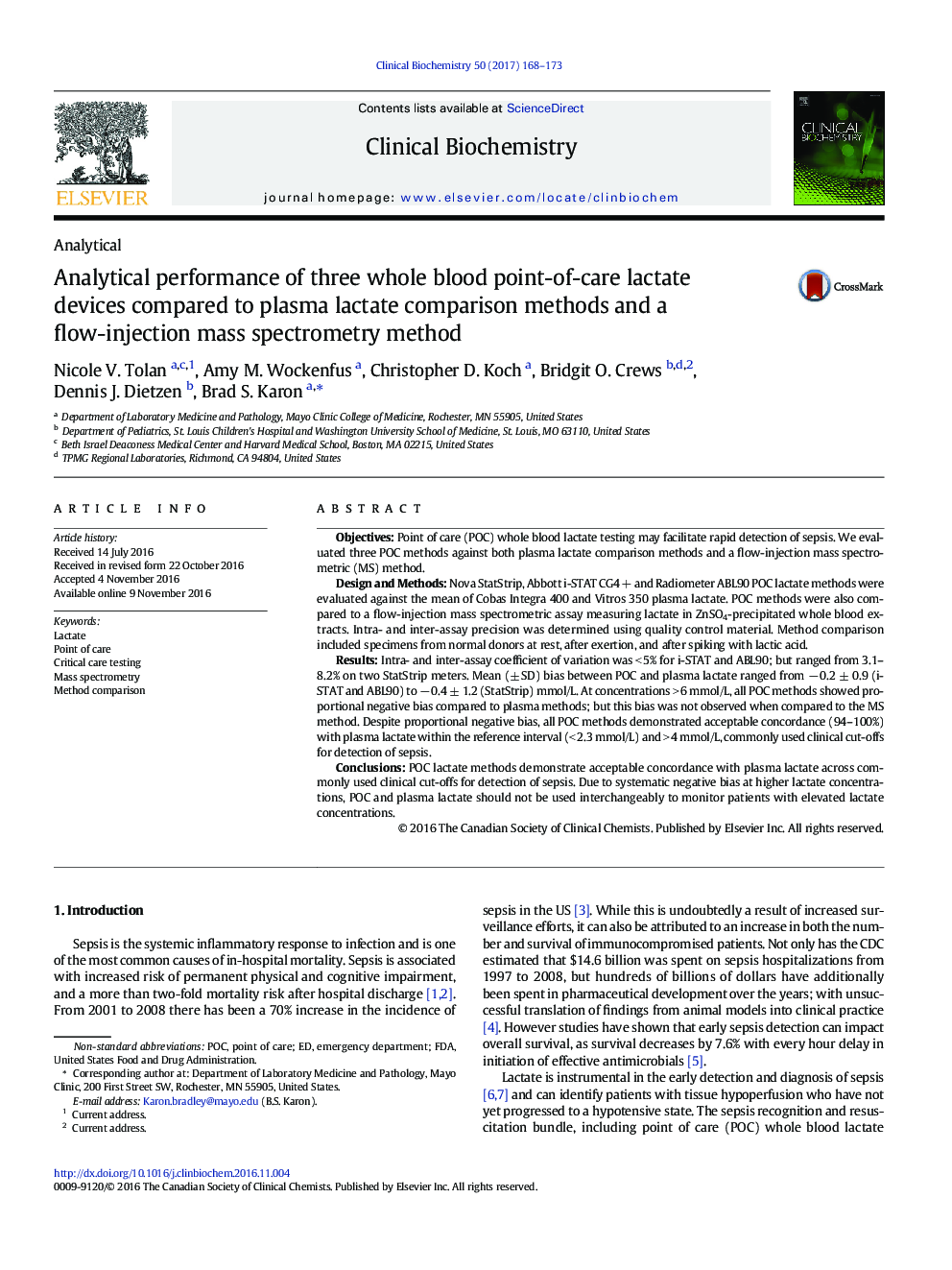| کد مقاله | کد نشریه | سال انتشار | مقاله انگلیسی | نسخه تمام متن |
|---|---|---|---|---|
| 5510025 | 1538857 | 2017 | 6 صفحه PDF | دانلود رایگان |
- Point of care lactate can be used to screen/classify patients for severe sepsis.
- Point of care lactate underestimates plasma lactate at higher concentrations.
- Point of care and plasma lactate should not be used interchangeably.
ObjectivesPoint of care (POC) whole blood lactate testing may facilitate rapid detection of sepsis. We evaluated three POC methods against both plasma lactate comparison methods and a flow-injection mass spectrometric (MS) method.Design and MethodsNova StatStrip, Abbott i-STAT CG4 + and Radiometer ABL90 POC lactate methods were evaluated against the mean of Cobas Integra 400 and Vitros 350 plasma lactate. POC methods were also compared to a flow-injection mass spectrometric assay measuring lactate in ZnSO4-precipitated whole blood extracts. Intra- and inter-assay precision was determined using quality control material. Method comparison included specimens from normal donors at rest, after exertion, and after spiking with lactic acid.ResultsIntra- and inter-assay coefficient of variation was < 5% for i-STAT and ABL90; but ranged from 3.1-8.2% on two StatStrip meters. Mean (± SD) bias between POC and plasma lactate ranged from â 0.2 ± 0.9 (i-STAT and ABL90) to â 0.4 ± 1.2 (StatStrip) mmol/L. At concentrations > 6 mmol/L, all POC methods showed proportional negative bias compared to plasma methods; but this bias was not observed when compared to the MS method. Despite proportional negative bias, all POC methods demonstrated acceptable concordance (94-100%) with plasma lactate within the reference interval (< 2.3 mmol/L) and > 4 mmol/L, commonly used clinical cut-offs for detection of sepsis.ConclusionsPOC lactate methods demonstrate acceptable concordance with plasma lactate across commonly used clinical cut-offs for detection of sepsis. Due to systematic negative bias at higher lactate concentrations, POC and plasma lactate should not be used interchangeably to monitor patients with elevated lactate concentrations.
Journal: Clinical Biochemistry - Volume 50, Issues 4â5, March 2017, Pages 168-173
